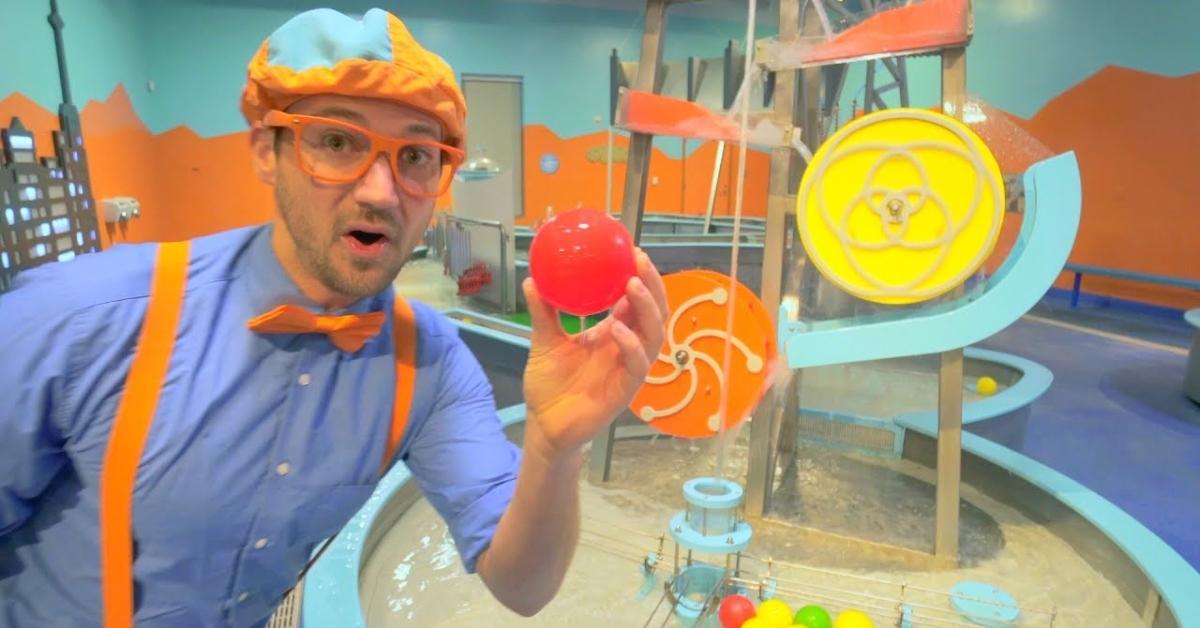Blippi Incident: The Inside Story Of What Happened And Its Impact
When it comes to kids' entertainment, Blippi is a name that resonates with millions of young fans worldwide. But behind the colorful costumes, catchy songs, and engaging videos lies a story that took an unexpected turn—the infamous Blippi incident. What exactly happened, and why did it spark such widespread debate? Let’s dive into the details and uncover the truth behind this viral phenomenon.
Blippi isn’t just a character; he’s a cultural icon for toddlers and preschoolers. With over 15 million subscribers on YouTube, his content has reached households across the globe. However, the world of children’s media isn’t always sunshine and rainbows. In recent years, the Blippi incident became a hot topic, raising questions about online safety, content moderation, and the impact of digital media on kids.
This article aims to shed light on the Blippi incident, exploring what happened, its implications, and how it changed the landscape of children’s content creation. Whether you’re a parent, educator, or simply curious about the world of kids’ media, this is the story you need to know.
Read also:Malcolm Gladwells Wife And Child An Insightful Journey Into Family Life
Table of Contents
- Blippi's Biography
- What Happened in the Blippi Incident?
- Impact on Kids and Families
- Content Moderation Challenges
- Platform Responsibility and Accountability
- The Role of Parents in Digital Media
- Regulations and Guidelines for Kids’ Content
- The Future of Kids’ Content Creation
- Lessons Learned from the Incident
- Conclusion: Moving Forward
Blippi's Biography
Before we dive into the incident, let’s get to know the man behind the mask. Blippi, whose real name is Stevin John, is a former preschool teacher turned YouTube sensation. Born on January 29, 1983, in Queens, New York, John has always had a passion for teaching and entertaining children.
Early Life and Career
John grew up in a modest family and developed an interest in performing arts at a young age. After completing his education in early childhood development, he worked as a preschool teacher, where he discovered his knack for engaging kids through fun and interactive lessons. It wasn’t long before he decided to bring his teaching methods to a broader audience via YouTube.
Here’s a quick look at his background:
| Name | Stevin John |
|---|---|
| Birthdate | January 29, 1983 |
| Profession | YouTube Content Creator, Preschool Teacher |
| Known For | Blippi Character, Educational Videos for Kids |
| YouTube Subscribers | Over 15 million |
What Happened in the Blippi Incident?
The Blippi incident refers to a series of events in 2020 when several of his videos were flagged for inappropriate content. Parents and viewers reported videos that allegedly contained violent or disturbing scenes, leading to widespread outrage. Some of the flagged content included scenes that were deemed too aggressive or scary for young children.
Key Details of the Incident
- Certain videos showed Blippi engaging in activities that could be perceived as unsafe or alarming.
- YouTube’s algorithm flagged these videos, prompting further investigation by the platform.
- Parents voiced their concerns, demanding clearer guidelines and stricter moderation for kids’ content.
While Blippi’s team claimed that the flagged content was part of a storyline meant to educate kids about safety, the controversy sparked debates about content appropriateness and platform responsibility.
Impact on Kids and Families
The Blippi incident had a profound impact on families who trusted the brand for safe and educational content. Many parents were left questioning the reliability of YouTube as a platform for children’s entertainment.
Read also:Alejandra Quiros Onlyfans The Rise Of A Digital Sensation
Emotional Reactions from Parents
Parents expressed shock and disappointment, with some even considering alternatives to YouTube for their kids’ screen time. The incident highlighted the importance of parental supervision and the need for transparent communication between creators and their audience.
Studies show that inappropriate content can have lasting effects on young minds, making it crucial for creators to prioritize safety and education in their content.
Content Moderation Challenges
Moderating content on platforms like YouTube is no easy task, especially when it comes to kids’ media. The sheer volume of uploads makes it challenging for platforms to ensure every video meets their guidelines.
Common Challenges Faced by Moderators
- Identifying subtle nuances in content that may be inappropriate for certain age groups.
- Dealing with cultural differences in what is considered acceptable or offensive.
- Keeping up with evolving trends and technologies that creators use to bypass filters.
Despite these challenges, platforms are investing heavily in AI-driven moderation tools to improve accuracy and efficiency.
Platform Responsibility and Accountability
YouTube and other streaming platforms play a pivotal role in shaping the kids’ media landscape. In the wake of the Blippi incident, YouTube introduced new features to enhance content safety, such as age restrictions and parental controls.
Steps Taken by YouTube
- Enhanced moderation tools to flag potentially harmful content.
- Collaborated with child safety experts to refine their guidelines.
- Provided resources for parents to better manage their kids’ online experiences.
These efforts demonstrate YouTube’s commitment to creating a safer environment for young viewers.
The Role of Parents in Digital Media
While platforms bear some responsibility, parents play a critical role in guiding their children’s digital consumption. Active involvement and open communication can help mitigate the risks associated with online media.
Tips for Parents
- Set screen time limits and monitor the content your kids watch.
- Engage in conversations about online safety and responsible media use.
- Explore alternative platforms or channels that align with your values.
Empowering parents with knowledge and tools is key to ensuring a positive digital experience for children.
Regulations and Guidelines for Kids’ Content
Governments and organizations worldwide are recognizing the need for stricter regulations in the kids’ media space. Initiatives like COPPA (Children’s Online Privacy Protection Act) aim to protect young users from harmful content and data misuse.
Key Regulatory Measures
- Mandating transparency in data collection practices.
- Requiring platforms to implement robust moderation systems.
- Encouraging collaboration between creators, platforms, and regulators.
These regulations are essential for maintaining a balanced and safe digital ecosystem for children.
The Future of Kids’ Content Creation
As technology continues to evolve, the future of kids’ content creation looks promising yet challenging. Creators will need to adapt to changing trends while prioritizing safety and education.
Trends to Watch
- Increased focus on interactive and immersive content.
- Adoption of AI-driven tools to enhance creativity and safety.
- Greater emphasis on diversity and representation in kids’ media.
By embracing these trends, creators can deliver content that not only entertains but also enriches the lives of young viewers.
Lessons Learned from the Incident
The Blippi incident serves as a valuable lesson for everyone involved in the kids’ media industry. It highlights the importance of collaboration, accountability, and transparency in creating safe and engaging content.
Key Takeaways
- Creators must prioritize safety and education in their content.
- Platforms should invest in advanced moderation tools and guidelines.
- Parents need to stay informed and actively participate in their kids’ digital experiences.
By learning from this incident, we can build a better future for kids’ media.
Conclusion: Moving Forward
The Blippi incident was a wake-up call for the kids’ media industry, shedding light on the challenges and opportunities in creating safe and educational content. While the road ahead may not be easy, the lessons learned from this experience will undoubtedly shape the future of kids’ entertainment.
We invite you to share your thoughts and experiences in the comments below. Together, we can foster a safer and more enriching digital environment for the next generation. Don’t forget to explore our other articles for more insights on kids’ media and beyond!
Article Recommendations



